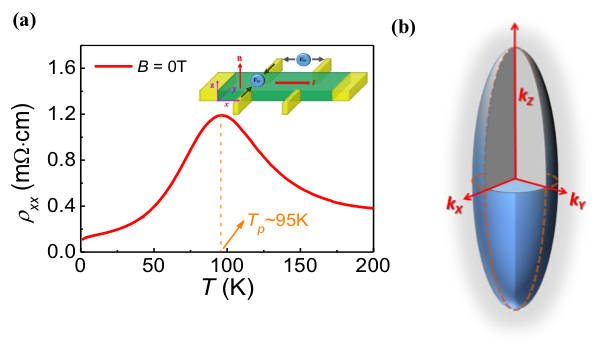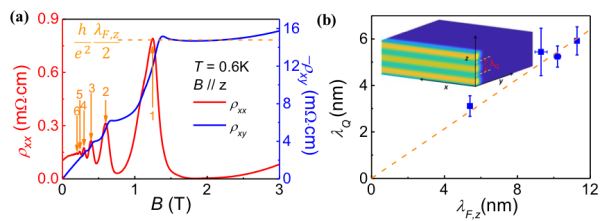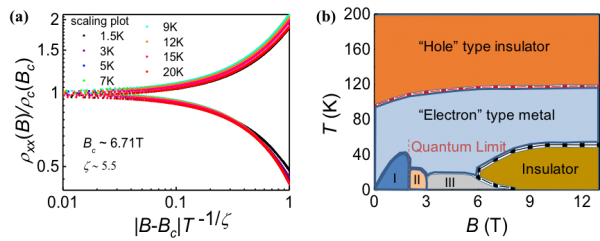3D Quantum Hall effect confirmed by experiment
2019-05-09
Recently, Associate Professor Zhang Liyuan from the Department of Physics at Southern University of Science and Technology worked with Professor Qiao Zhenhua of the University of Science and Technology of China (USTC), and Associate Professor Shengyuan Yang of Singapore University of Technology and Design (SUTD). The three of them have proved, through experimentation, the 3D quantum Hall effect from the ZrTe5 crystal. The research was published in the top academic journal Nature, in a paper entitled “Three-dimensional quantum Hall effect and metal–insulator transition in ZrTe5.”
In the 1980s, scientists discovered the quantum Hall effect (QHE) in two-dimensional electronic systems, making the topology play a central role in condensed matter physics. For decades, there have been theoretical predictions about the possibility of extending QHE to a three-dimensional electronic system, but it has never been proven experimentally.

The researchers measured the low-temperature electrical transmission of bulk ZrTe5 crystals under magnetic field and calculated the quantum limit at a relatively low magnetic field. The researchers observed a non-dissipative longitudinal resistivity, close to zero, proportional to half of the Fermi wavelength along the field in the Hall resistivity platform. This response has a 3D QHE characteristic that strongly suggests that Fermi surface instability is driven by enhanced interaction effects at extreme quantum limits.

By further increasing the magnetic field, both the longitudinal and Hall resistivity increase significantly and exhibit a metal-insulator transition behavior, indicating another quantum phase transition driven by the magnetic field.

The results of this study provide reliable experimental evidence for 3D QHE, providing a useful platform for further exploration of singular quantum phases and transitions in 3D systems.
Brookhaven National Laboratory, Florida Strong Magnetic Field Laboratory, Massachusetts Institute of Technology, Singapore University of Technology and Design and Renmin University of China are participating units. Associate Professor Zhang Liyuan, Professor Qiao Zhenhua (USTC), and SUTD Associate Professor Shengyuan a. Yang are co-authors.
This work has been strongly supported by the Guangdong Innovation and Entrepreneurship Team, the Shenzhen Peacock Team, and the Basic Research-Disciplinary Layout Project.
Paper link: https://www.nature.com/articles/s41586-019-1180-9




